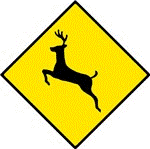United States Department of Agriculture, National Wildlife Research Center: Symposia

Human Conflicts with Wildlife: 2002 Symposium
Date of this Version
August 2000
Abstract
Rodents cause serious losses to crops in many different parts of the world. The house mouse (Mus domesticus, Schwarz and Schwarz 1943) is a serious pest to agriculture in Australia. The impacts of house mouse damage to crops in Australia were examined. Plagues of mice (> 1,000 mice/ha) cause enormous economic and social stress to rural communities in Australia. The mouse plague in 1993/94 caused about US$60 million in damage to crops, intensive livestock industries, and rural communities. The impact of mouse plagues is generally well understood, but there is a dearth of knowledge about the relationship between mouse densities and the degree of mouse damage to particular crops types. This paper examines the relationships between the abundance estimates of mice and the damage they cause to crops at sowing and prior to harvest. Crop types examined were wheat, flood irrigated rice, irrigated soybean, and maize. Estimates of damage were obtained by counting the number of tillers (or pods) that were damaged by mice. The results from two field seasons show that mouse population abundance was low (< 75 mice/ha) and the damage to crops was low also (generally < 5%). The positive relationship between damage and the abundance was weak for wheat crops prior to harvest, strong for damage to soybean crops, and unclear for rice and maize crops. More data are required over a wider range of mouse densities. The available data on the effectiveness and costs of mouse control were summarized. These data were used to build an economic model to provide better options for the management of mice. The model will be incorporated into a system for information transfer and decision support for the management of mouse plagues (Mouser CD-ROM).

